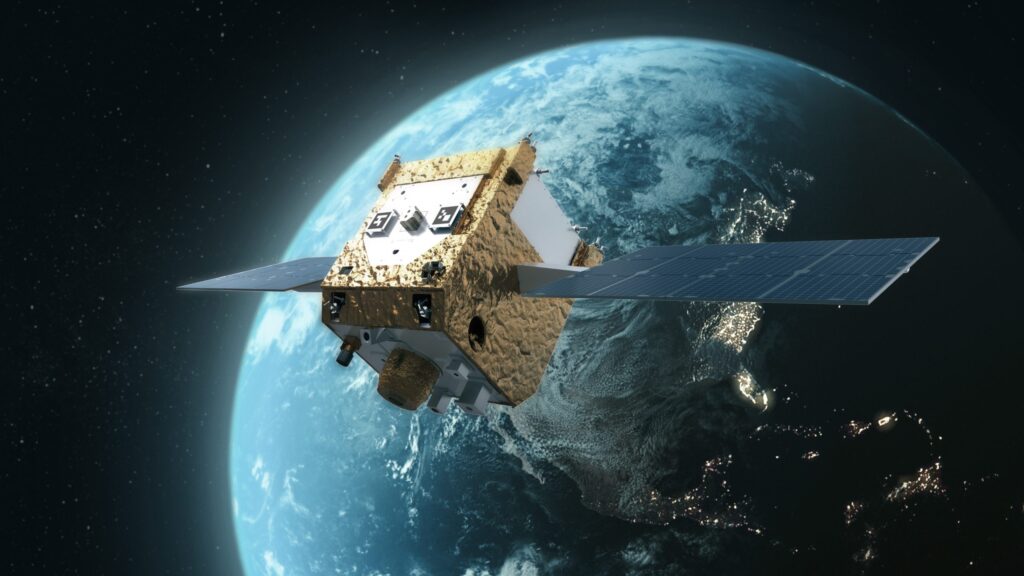Audio of this text is delivered to you by the Air & House Forces Affiliation, honoring and supporting our Airmen, Guardians, and their households. Discover out extra at afa.org
The House Drive ought to take daring, decisive steps—and shortly—to develop the capabilities and structure wanted to help extra dynamic operations in orbit and counter Chinese language aggression and technological progress, in keeping with a brand new report from AFA’s Mitchell Institute for Aerospace Research.
The flexibility to restore and refuel satellites has for many years been an space of curiosity for the U.S. army, however by no means a devoted mission. In recent times, U.S. House Command officers have grown extra vocal calling for maneuverable satellites designed to function in an more and more hostile house surroundings and emphasised the function that an on-orbit servicing structure may play in enabling that functionality. The House Drive has acknowledged the operational crucial and pursued one-off functionality demonstrations however hasn’t revealed a long-term plan to develop the supporting structure or invested ample assets.
The Mitchell Institute report, written by Senior Resident Fellow for House Research Charles Galbreath, argues that crafting a method for dynamic house operations is vital to the House Drive’s capacity to maneuver and function freely within the area and urges the service to behave rapidly to find out its subsequent steps.
“Hesitance to totally implement dynamic house operations at scale dangers ceding worthwhile time and initiative to adversaries,” the report states. “The House Drive should transfer decisively to embrace all alternatives of this new operational paradigm.”
Organizationally, the report recommends the House Drive set up a program workplace devoted to creating foundational in-space logistics infrastructure, in addition to the ideas and doctrine to help operations.
It additional argues that House Command ought to proceed to advocate for capabilities to help dynamic house operations, and the House Drive ought to intently coordinate with House Command to make sure that its wants are translated into necessities and in the end fielded methods.
Whereas discussions round dynamic house operations typically deal with in-space capabilities like satellite tv for pc refueling and robotic arms that may improve spacecraft, the report notes that ground-based command and management methods, launch structure, and superior applied sciences like laser communication hyperlinks are all essential to enabling satellites and different on-orbit methods.
To that finish, it recommends broad funding throughout these segments. In house, it requires extra funding for on-orbit refueling and in-space meeting capabilities and proposes the service operationalize methods just like the X-37B spaceplane, which up to now has solely supported experimental missions.
It additionally suggests the service ought to proceed to increase its superior command and management and laser communications capabilities and broaden launch entry.
“Enhancements to extend the flexibleness and resilience of the orbital, terrestrial, hyperlink, and launch segments are important to forestall exploitation of a weak spot in a singular aspect that might undermine the entire structure,” the report states. “A number of of those enhancements are important to integrating maneuver and shock to create compounding dilemmas for adversaries and deny them entry to and confidence of their house methods.”
Talking with reporters previous to the report’s public launch Nov. 6, Galbreath mentioned that whereas the House Drive’s funds is small relative to the opposite army providers, price doesn’t need to be a significant obstacle to designing methods that may be refueled or upgraded. In comparison with launching giant fleets of satellites which have to get replaced each few years, designing spacecraft with built-in refueling ports or augmentation interfaces is maybe the more cost effective possibility in the long term.
“If you happen to make investments slightly bit extra to make them refuelable and create the refueling structure, sure, there’s the next preliminary price—as a lot as twice as a lot—however over time, that rapidly decreases and is way lower than the total alternative price,” Galbreath mentioned Nov. 4. “These are a number of the components planners have to be contemplating.”
Past placing methods in house, Galbreath famous that because the service considers its longer-term plans, officers could need to issue within the function {that a} Guardian in house may play in DSO missions. The service doesn’t presently have plans to deploy House Drive personnel to house, however Galbreath mentioned he thinks that may very well be a necessity sooner or later—particularly because the threats to house belongings develop more and more advanced.
“If we’re speaking a few extra dynamic menace surroundings, we could not have the total suite of instruments in a robotic or autonomous system that we would wish to restore or return a functionality to operations,” he mentioned. “The way in which a human can assume on the fly, can adapt, I believe, is one thing we will’t ignore.”
Audio of this text is delivered to you by the Air & House Forces Affiliation, honoring and supporting our Airmen, Guardians, and their households. Discover out extra at afa.org

